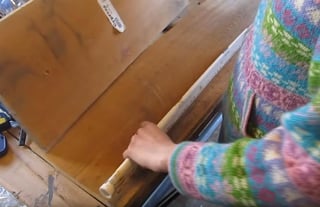This was posted after a discussion of whether assassins' questions about deadly weapons would be on-topic here.
If I wanted to make a sword, say as a prop for a theatrical production, what would be the best material to use that satisfies the following criteria?
It must be relatively easy to make:
- can be made at home
- requiring only materials and tools which are relatively easy to procure
- shouldn't take too long to make
It should also be realistic:
- rigid, not bending or flopping about even when it strikes a solid object
- the same colour and appearance as a real sword would be
- preferably reasonably heavy, so that it feels as well as looks realistic
How would I go about making such a 'weapon'?
Edit for clarification: the type of sword I'm imagining would probably be classed as a broadsword: not thin and pin-shaped like a rapier, but not a massive greatsword either. Example pictures (randomly picked off the internet - it doesn't have to look exactly like either of these):


